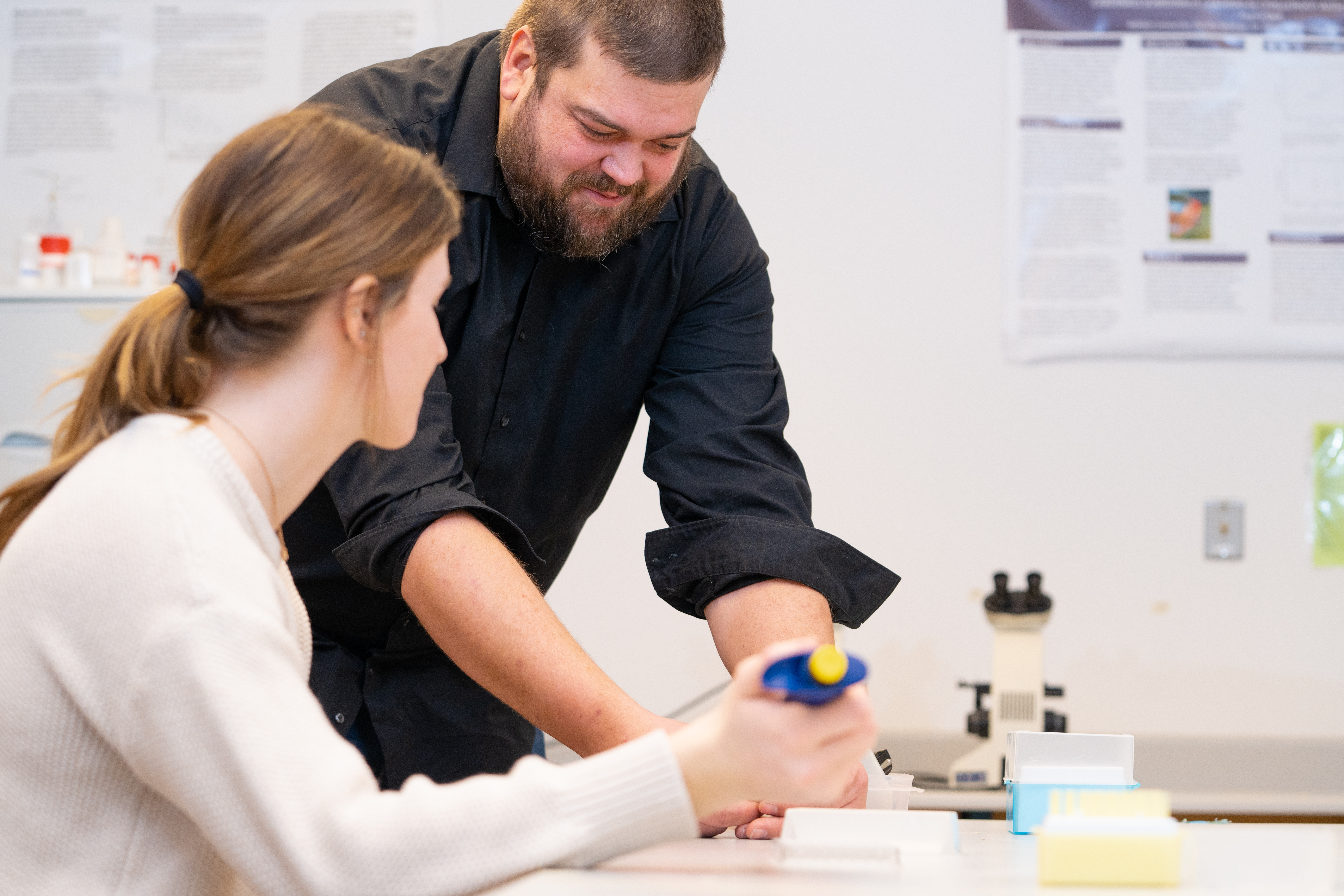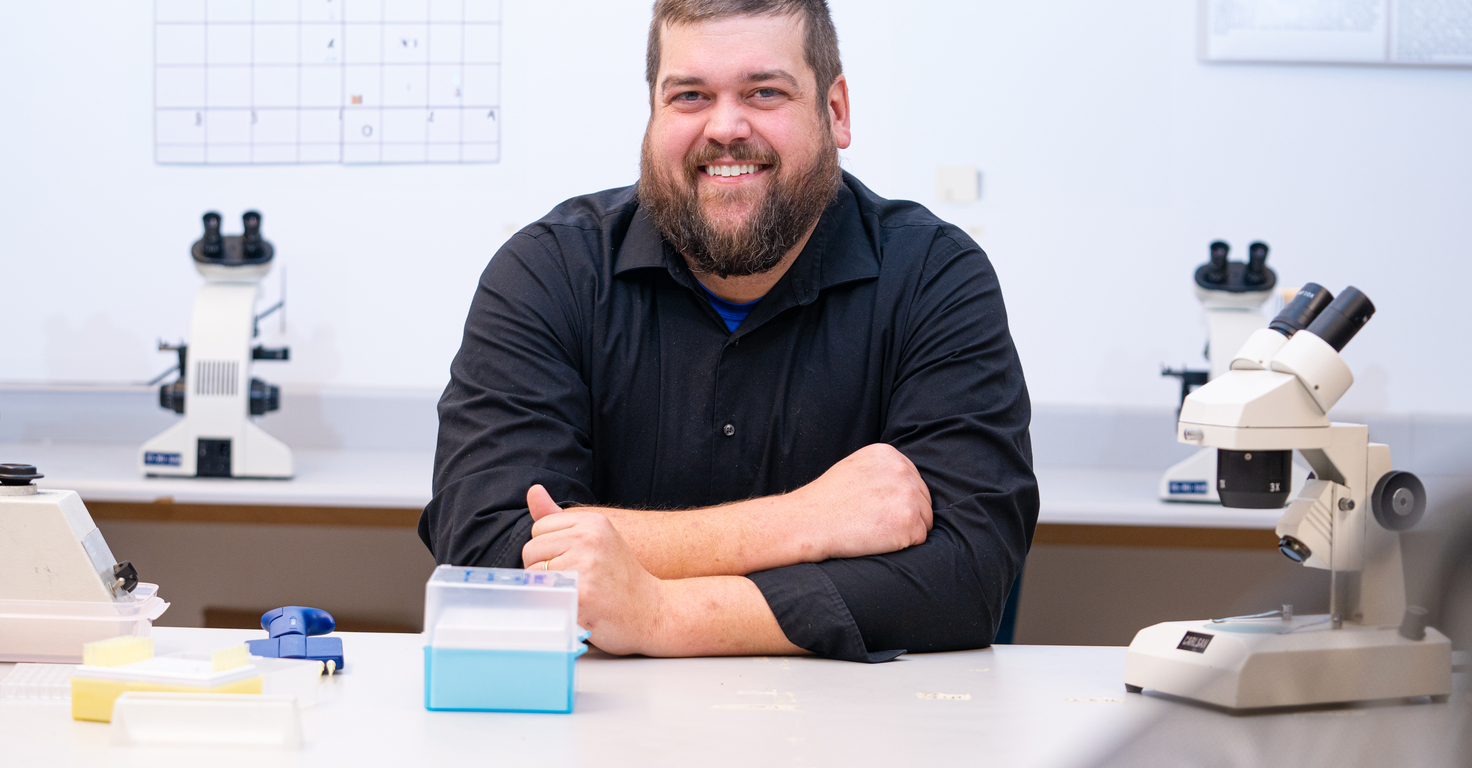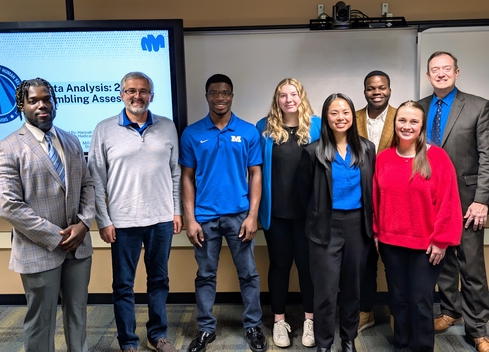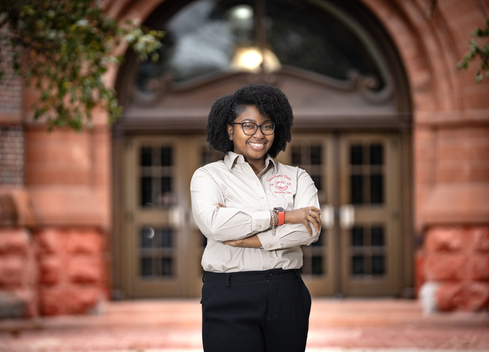DECATUR, Ill. – Take a car ride with Millikin University Biology Professor Dr. Travis Wilcoxen, and there’s a distinct possibility it might involve capturing, tagging, and releasing a raptor.
No, that’s not the nemesis of the visitors of Jurassic Park. A raptor is another term for birds of prey, including eagles, falcons, kestrels, hawks, and owls around Illinois. Wilcoxen serves as the Board President of the Illinois Raptor Center (IRC), a non-profit organization that rehabilitates injured and sick birds of prey, and whenever he has the opportunity to collect more data and samples, he won’t pass up the chance.
Seeing a raptor positioned on a power pole, Wilcoxen will toss a trap from his vehicle that includes a live mouse (kept safe and sound in a protected roll cage) that will entice the bird to swoop down and get its talons entangled in a series of tiny rope nooses on the outside of the trap.

“We joke that the birds are almost indignant after being caught. I think it is because they have no predators, so they are not scared,” Wilcoxen said. “Their eyes get all big, they open their mouth, it's almost like they're shocked to have something bad happen to them.”
An essential part of controlling a trapped raptor is placing a hood to cover its eyes, which puts the bird in a near catatonic state. Thanks to the ingenuity and craftsmanship of IRC Program Director Jacques Nuzzo, Wilcoxen has Millikin-branded hoods to aid him in his studies.
“Once you get the hood on, their whole body, it just goes calm. They were originally invented for people to hunt with birds of prey because they want the bird to remain calm during transport,” Wilcoxen said. “When their hood is on, wings are wrapped, feet are secured, we can safely go about everything else. We weigh it, take measurements, take a blood sample, put a band on it, take some pictures, and send it about its way. We try not to remove them from their location in less than 15 minutes.”
Depending on the season, between 20-80 birds can be in rehabilitation at the IRC, located about four miles west of Millikin University’s campus on the shores of the Sangamon River, and between 300-400 birds are assisted over a year. The IRC also houses the Superflight, one of the few indoor bald eagle rehabilitation facilities in the world that allows the eagles to get full dynamic flight indoors. Through Wilcoxen’s hard work, the IRC has partnered in many Performance Learning projects in various fields, including Biology, Physical Therapy, and Pre-Professional programs.
“A little over 10 years ago, we took our first samples from the IRC birds to analyze them at Millikin for a project. I had two research students who were local (to Decatur) and in the area, and we got all the volunteers at the Raptor Center huddled in the little animal hospital, and we went over the entire protocol when a bird comes in,” Wilcoxen said. “What talked about what samples do we need? How do we get them? And then what are they going to be used for? So for the past 10 years, we’ve been working on those projects.”
Initially, students in Pre-Veterinary Medicine received first-hand experiences at the IRC, and opportunities have expanded to other majors as the research projects have developed.
“The Pre-Vet students saw what a vet's life and work looks like and got some additional training. Then it grew and opened up a whole new opportunity for all of our Pre-Med students and all other human health students who want to study infectious disease,” Wilcoxen said. “We started talking about how these raptors are patients who need to be rehabilitated and sent back to the wild. We have all these Physical Therapy students who want to understand how you get people back to work. We've had Physical Therapy students do projects, and it has become a great opportunity for us to serve the IRC and help them improve their rehab outcomes.”

Recent Millikin Performance Learning research projects overseen by Wilcoxen have included a study on measuring the effects of rodent poisoning on raptors, rabbit fever transmission between parasitic flies and birds of prey, and analyzing the seasonal patterns of West Nile virus in small warblers. Wilcoxen’s work was recently honored during the 2024 Honors Convocation when he received the Teaching Excellence Award, which recognizes faculty who have a record of outstanding teaching achievement.
Millikin students have also played an active role in the IRC’s latest expansion, which is a banding station for smaller birds. Federal rules limit the ability for bird rehabilitation centers to have the public view the raptors being treated, so to create more opportunities to connect directly with the community, the IRC started a bird banding station, which brings smaller birds up close to visitors.

“Last year, we opened a bird banding station, and the public outreach opportunity has been huge. In two years, we've had over 200 visitors that come out and learn from us, watch us, and hear about the bird research,” Wilcoxen said. “Now we're at the point where we're even getting Millikan students doing their work in front of the public, talking about their work. It is exciting because now we have the element that it's not just science for the sake of science, it's science for understanding public health."



